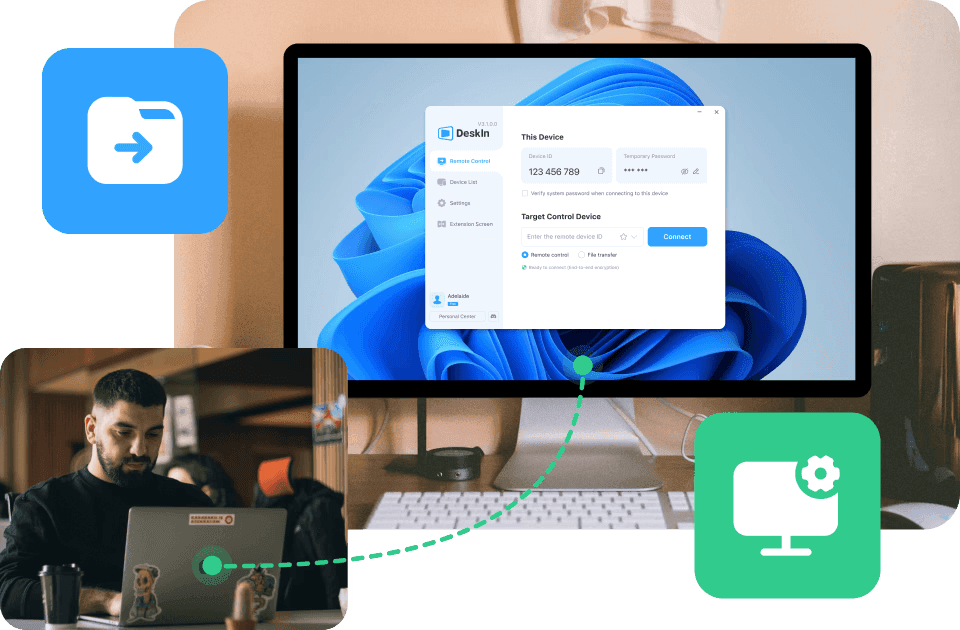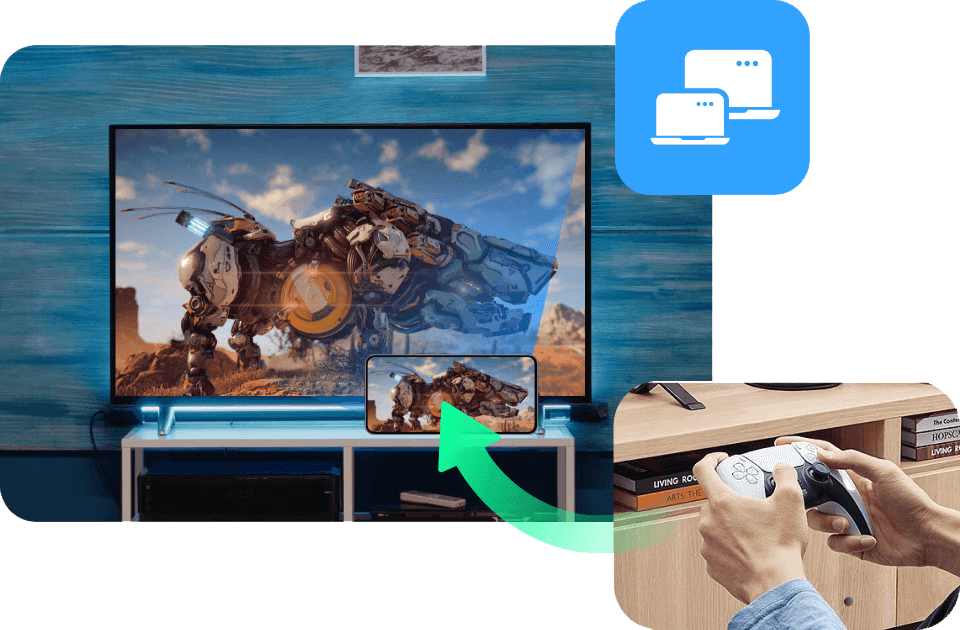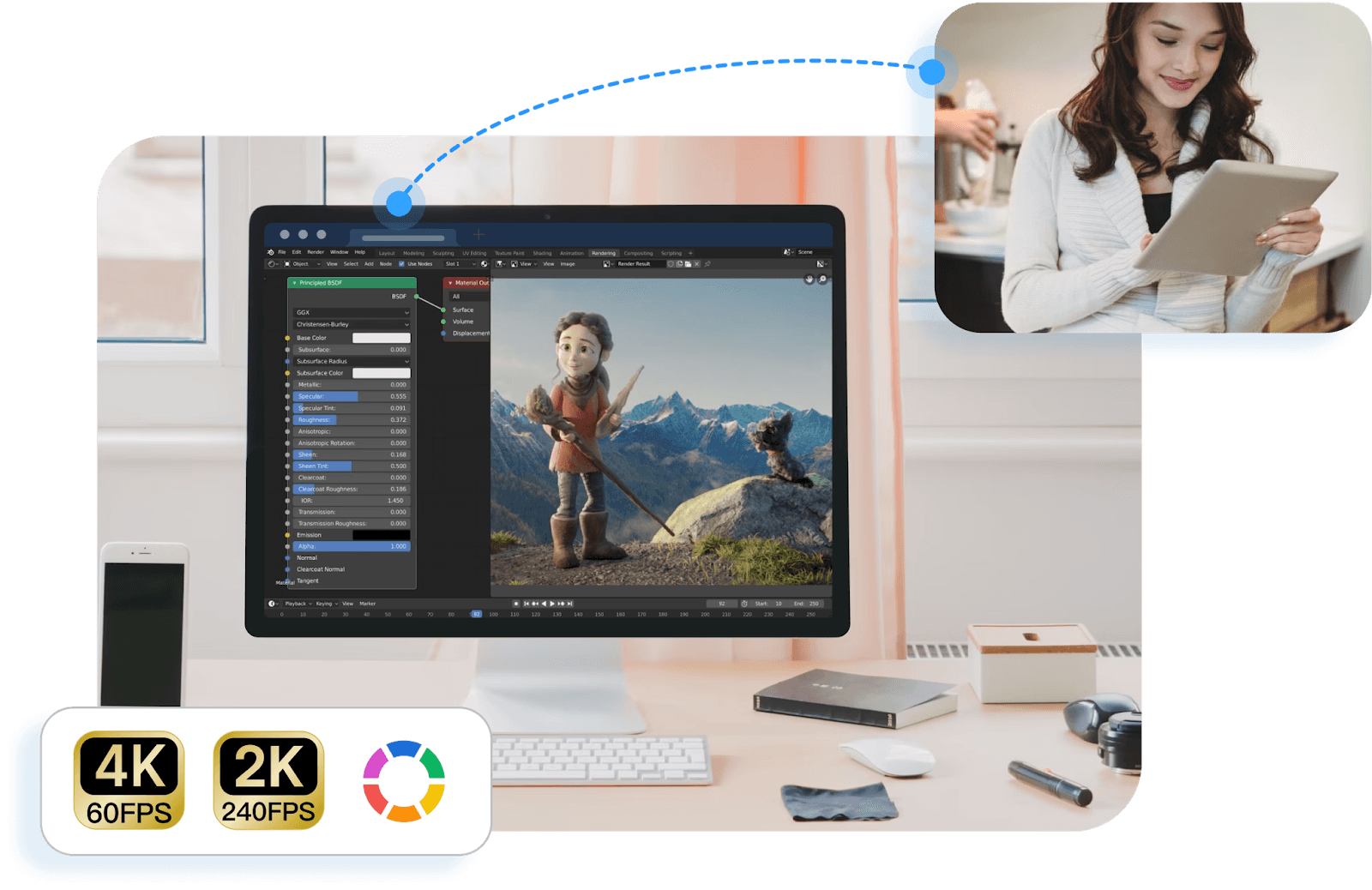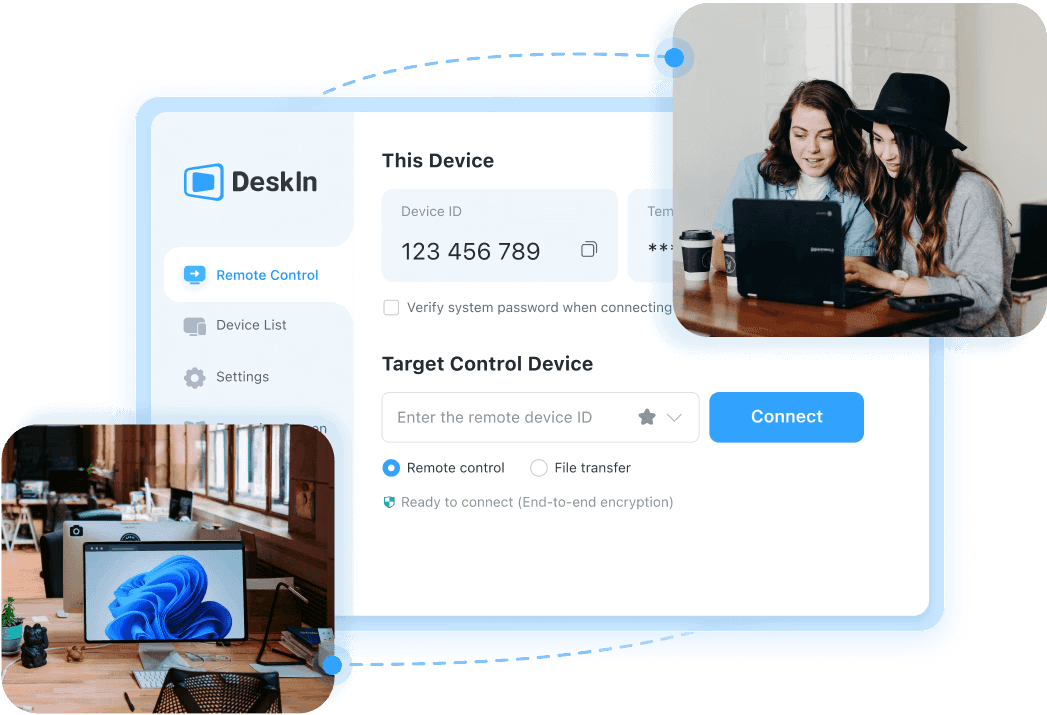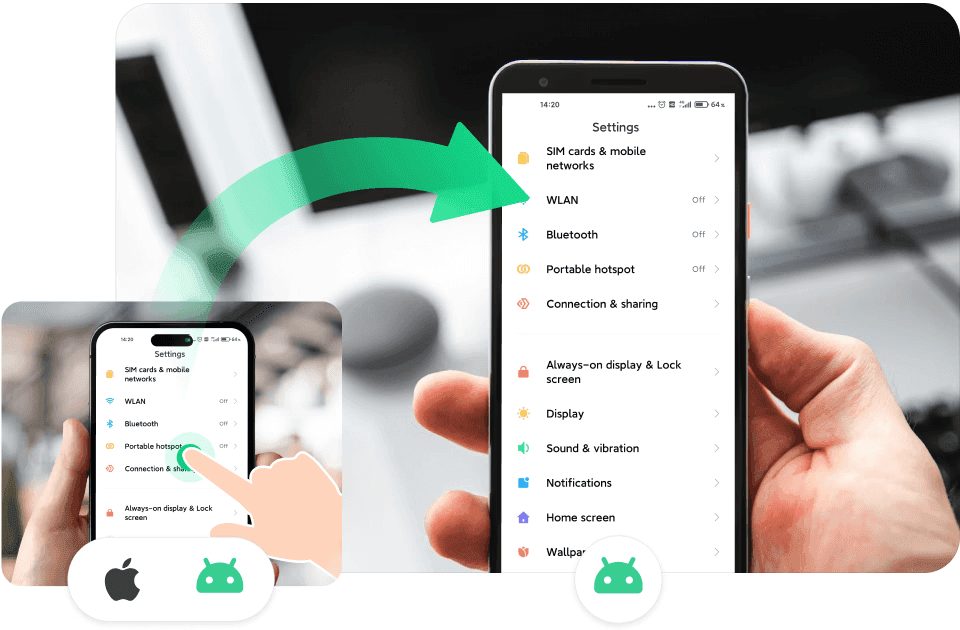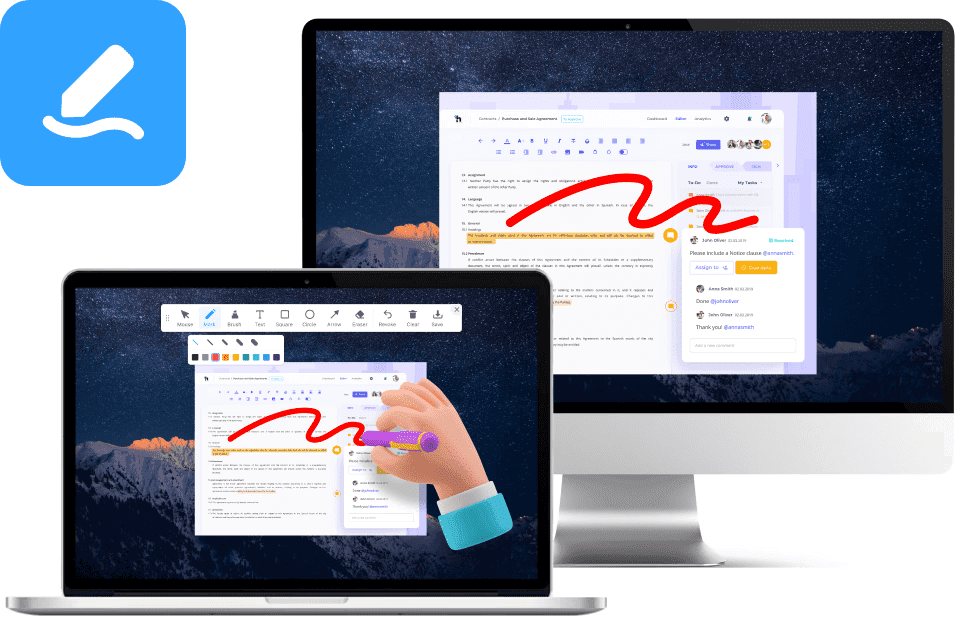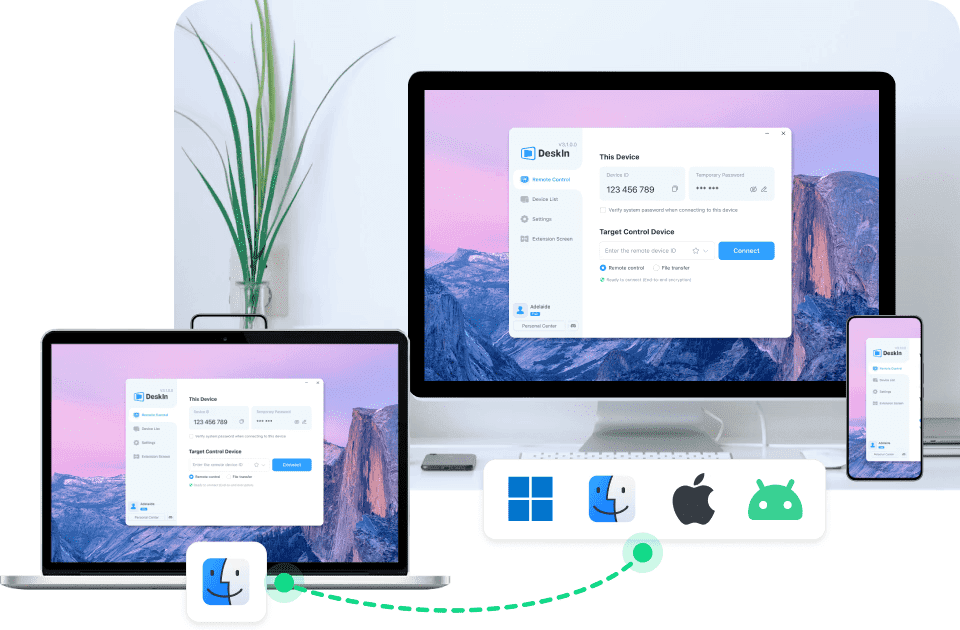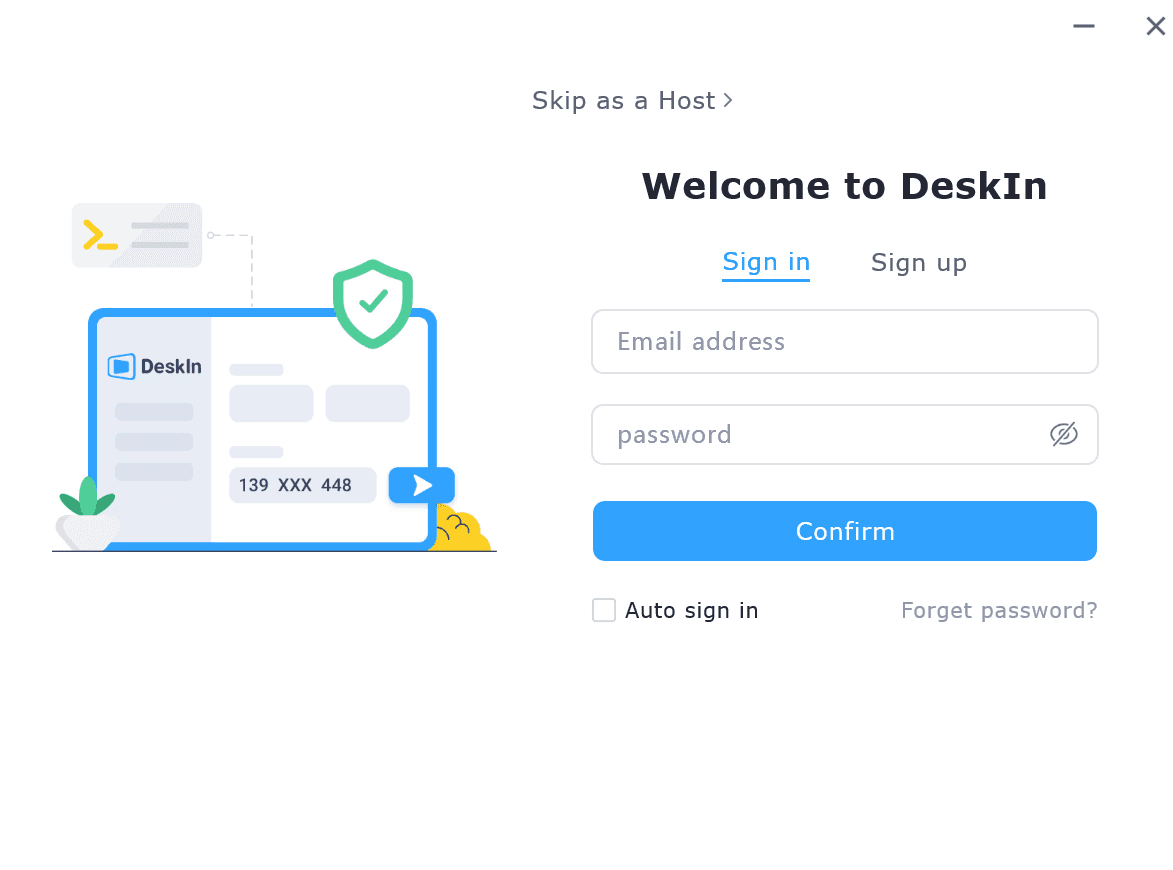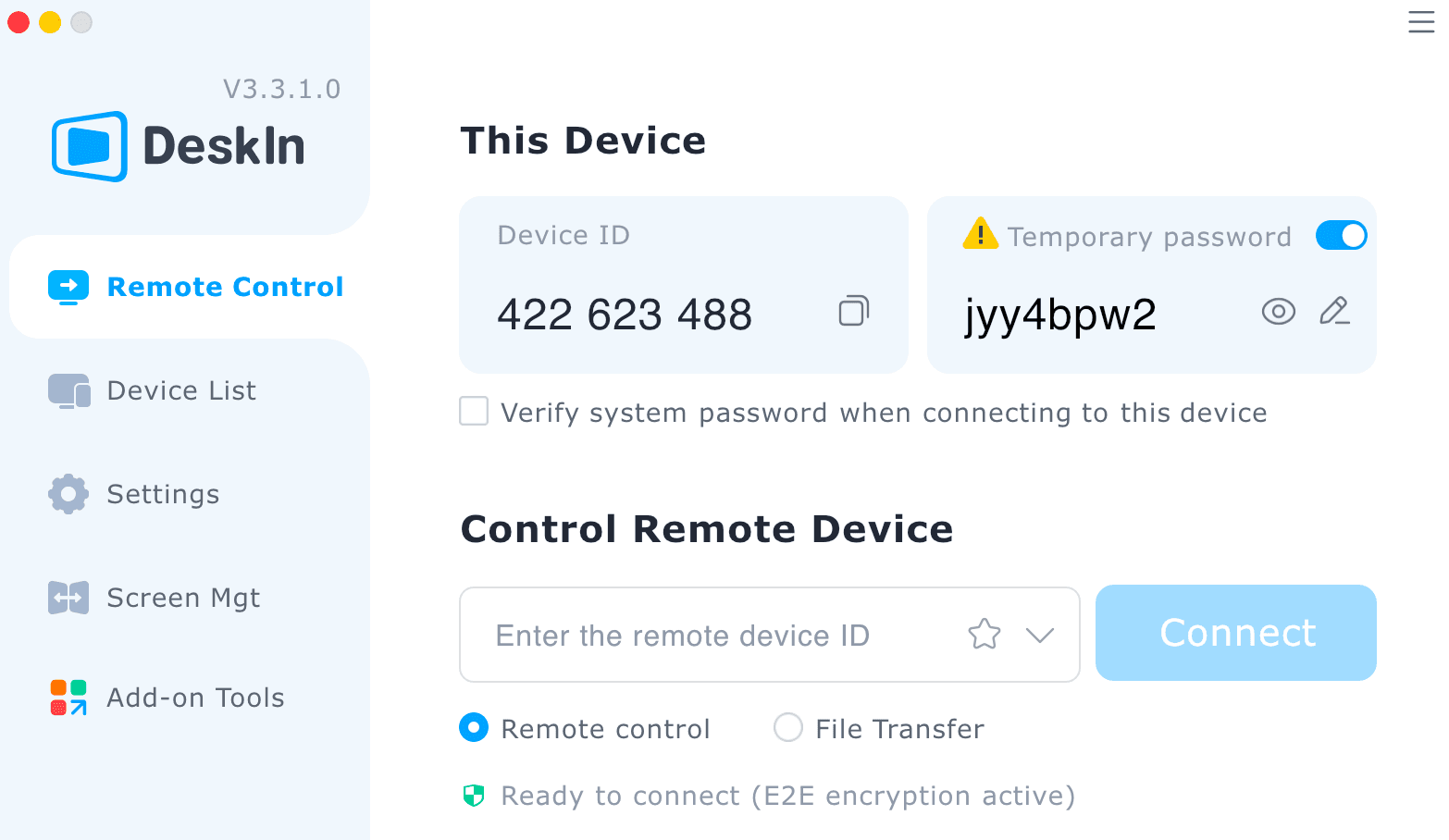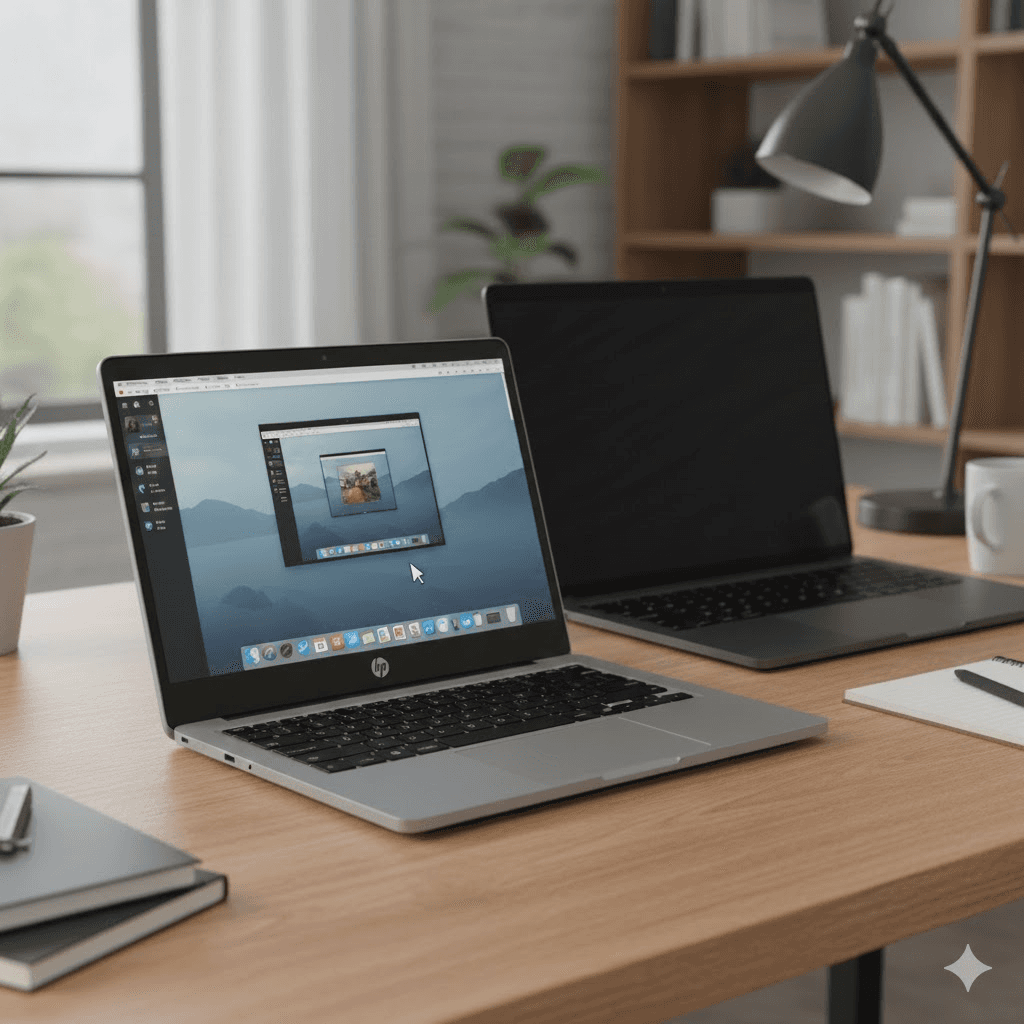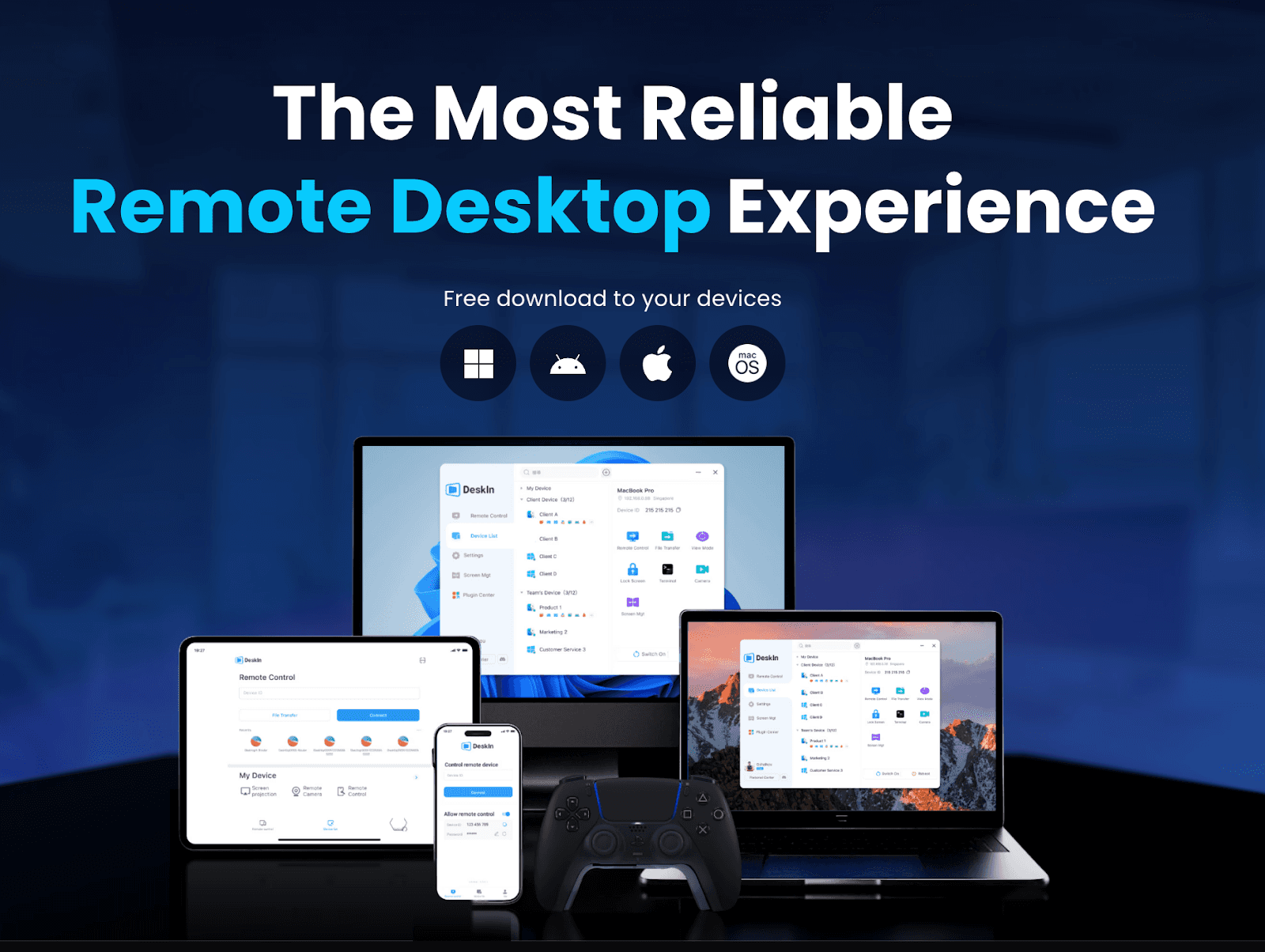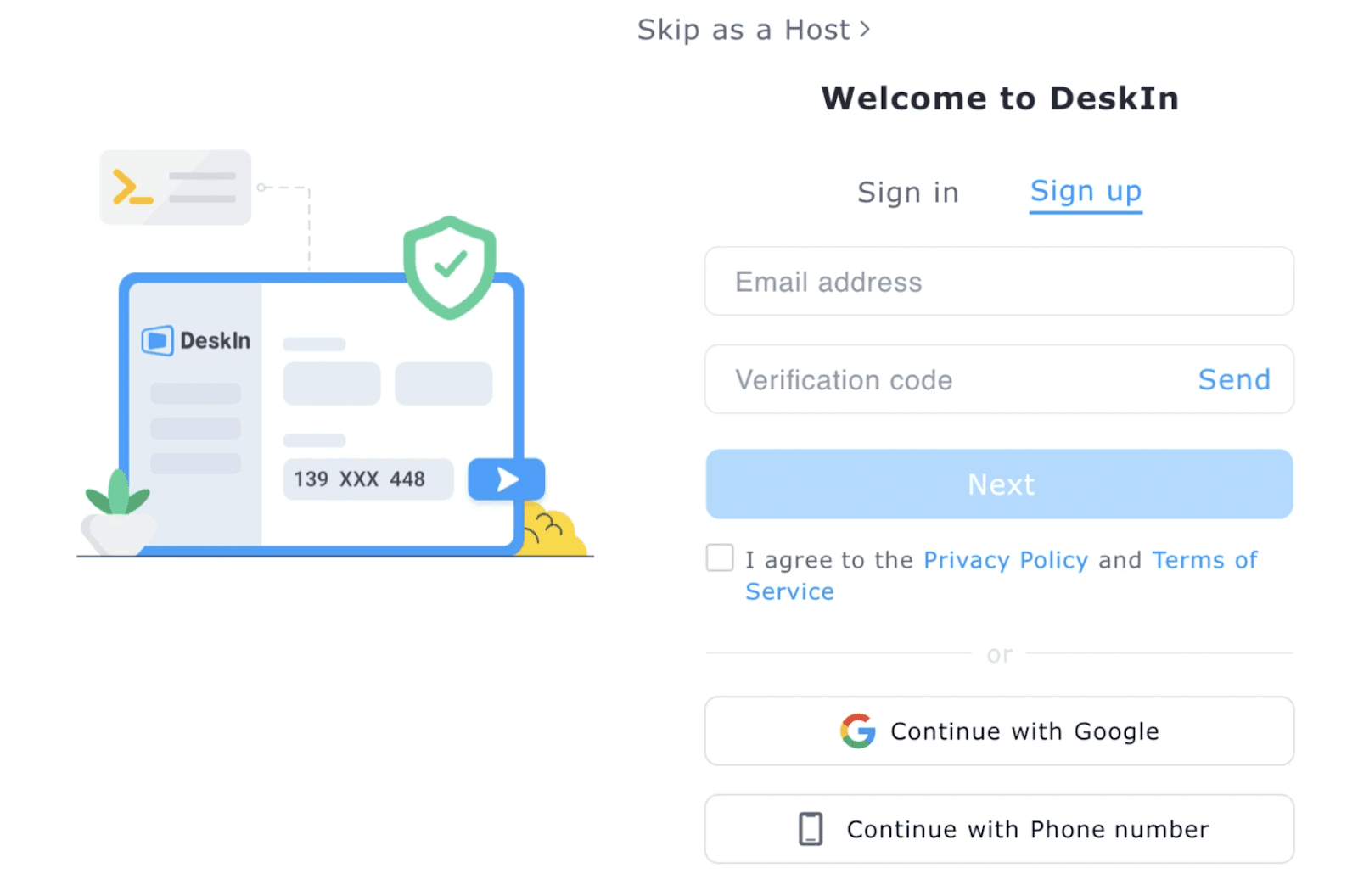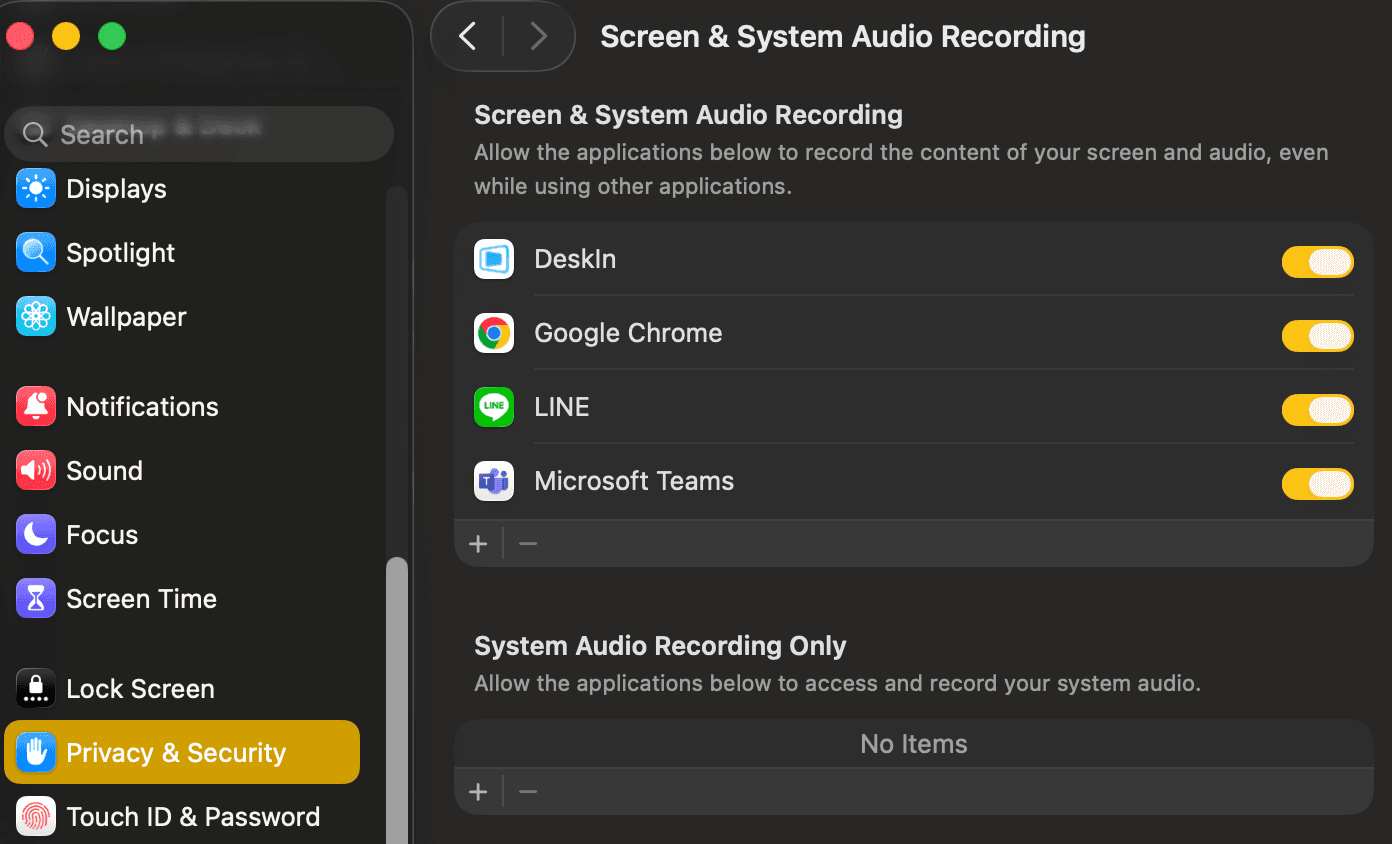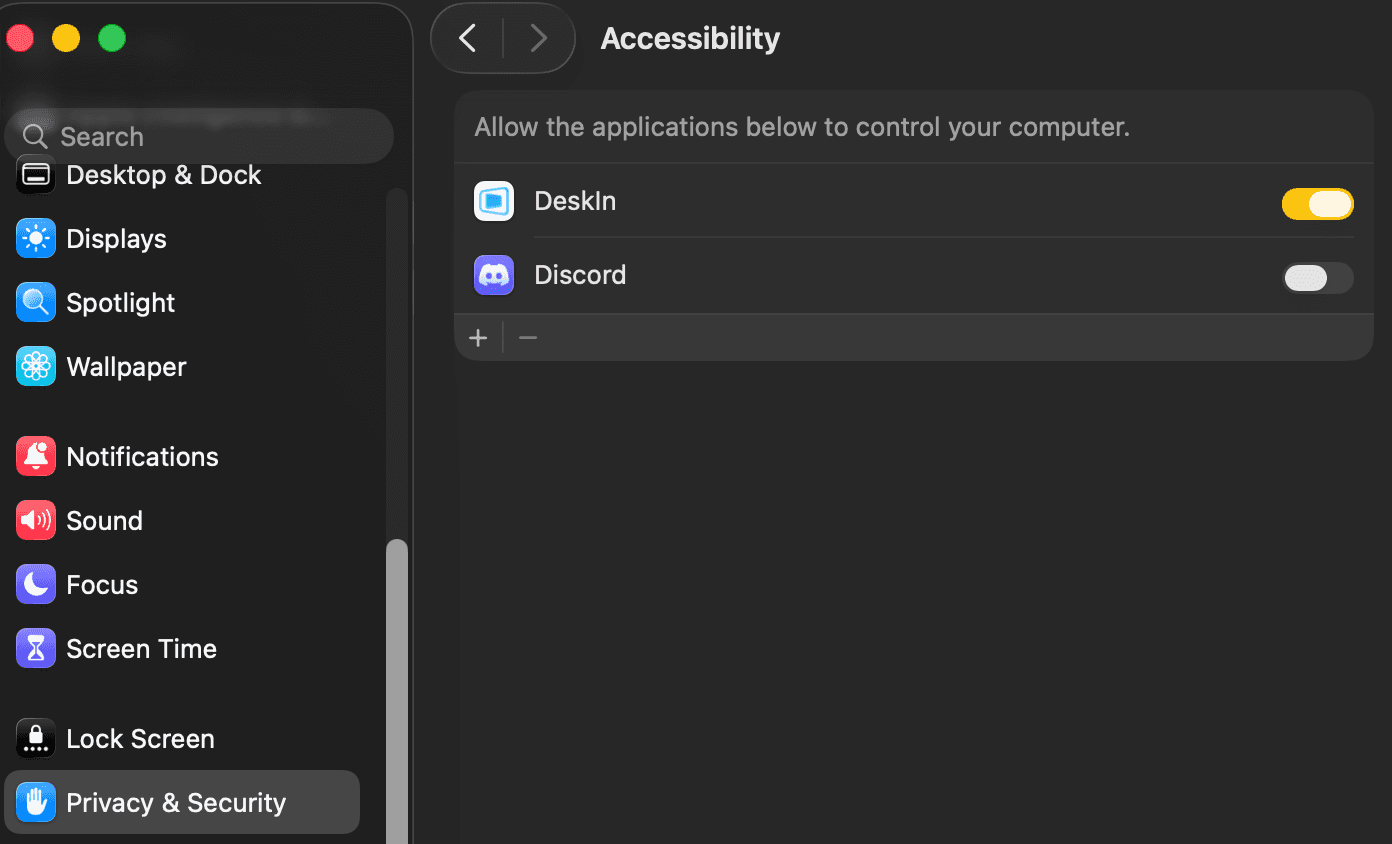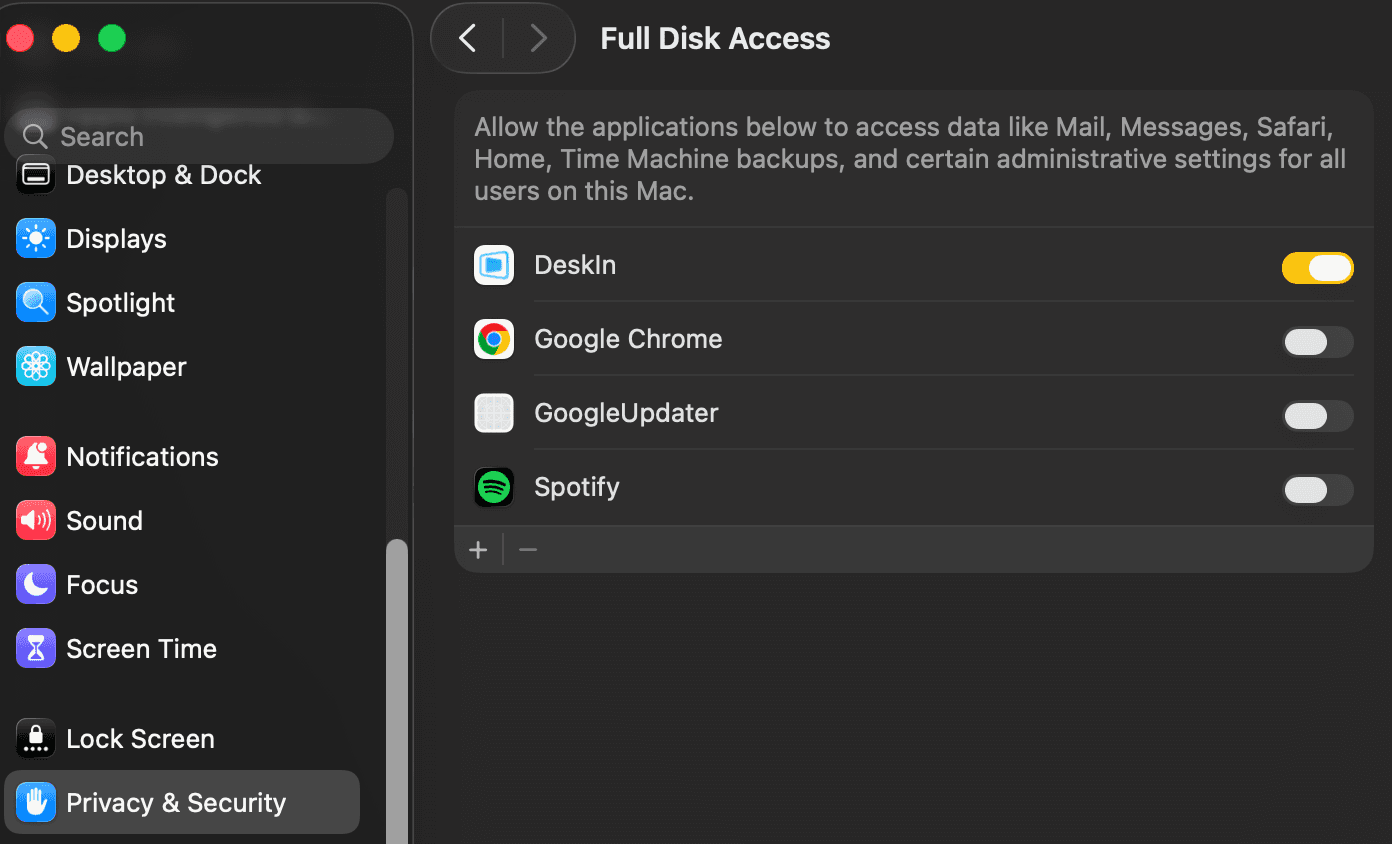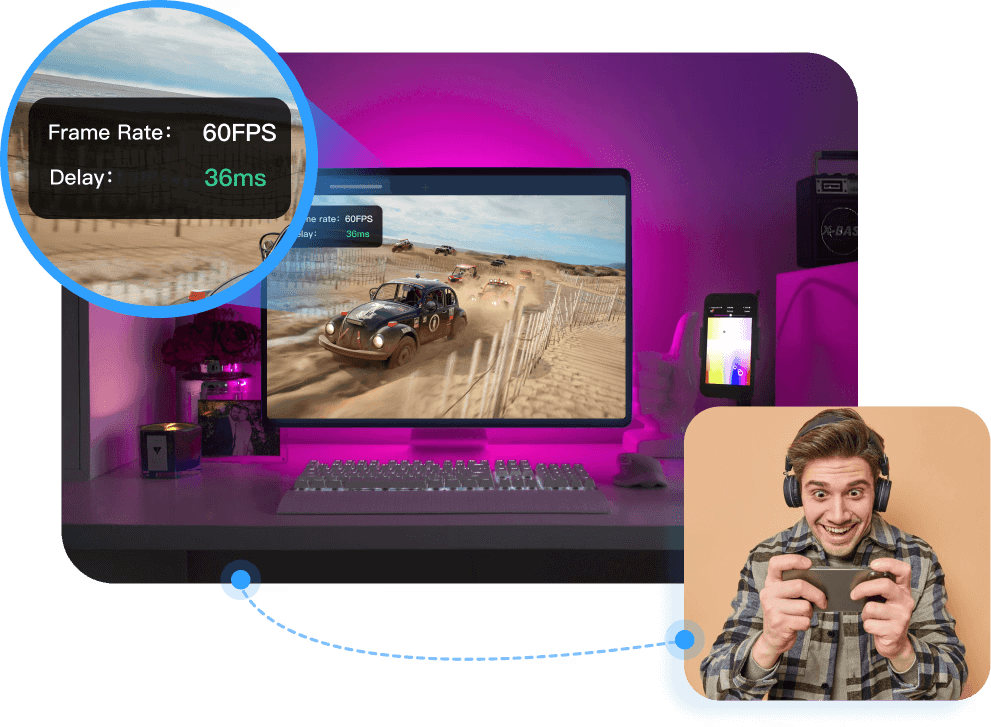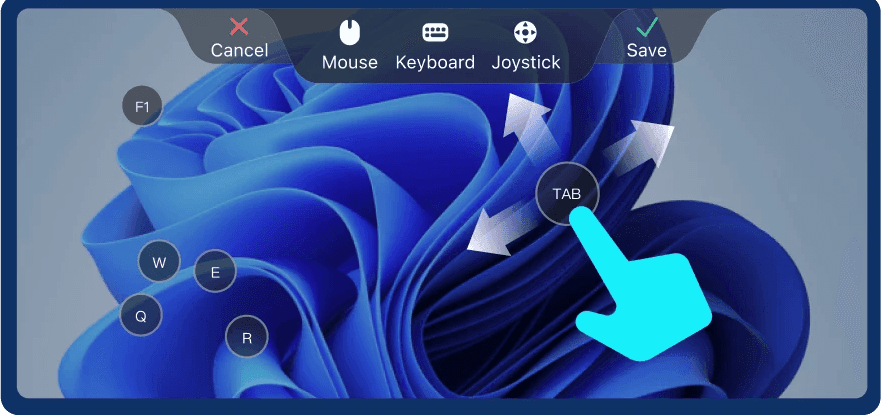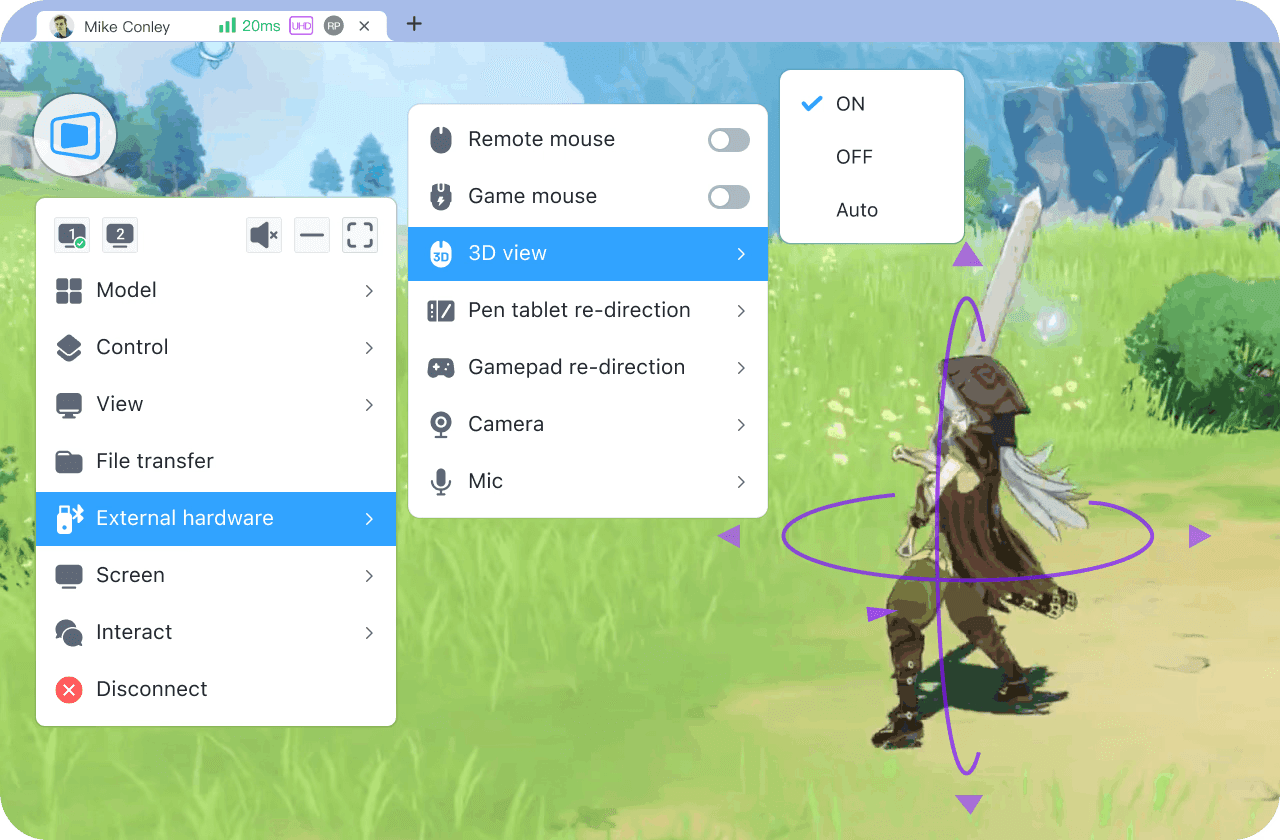As someone who juggles multiple devices daily, I've discovered that the ability to mirror Android to Mac isn't just convenient—it's a game-changer for productivity. Whether you're a remote worker needing to share mobile presentations, a digital nomad managing content across devices, or simply someone who wants to enjoy Android apps on a larger screen, mirroring your Android to Mac opens up incredible possibilities.
The challenge? Apple and Android don't naturally play well together. But don't worry—I've spent years testing various solutions, and I'm here to guide you through the most effective ways to mirror Android to Mac in 2025.
In this guide, you'll learn:
The best methods to mirror Android to Mac without compatibility headaches
Step-by-step instructions for setting up screen mirroring
How DeskIn makes Android to Mac mirroring remarkably simple
Practical use cases that will transform your workflow
Let's break down the walls between your devices and create a seamless digital experience.
Understanding Android to Mac Mirroring: What You Need to Know
Before diving into specific methods for how to mirror Android to Mac, it's important to understand what screen mirroring actually involves. When you mirror Android to Mac, you're essentially displaying your Android device's screen on your Mac computer in real-time. This allows you to:
View and control Android apps from your Mac
Transfer files between devices more easily
Demonstrate mobile apps during presentations
Take screenshots or record your Android screen
Text from your Mac using your Android phone
For remote workers and digital nomads, the ability to mirror Android to Mac means fewer device switches and improved focus. For content creators, it provides new ways to capture and share mobile content.
Pro Tip: When you mirror Android to Mac, make sure both devices are connected to the same Wi-Fi network for the best performance and lowest latency.
3 Way Methods to Mirror Android to Mac
1. Using USB Connection for Direct Android to Mac Mirroring
One of the most reliable ways to mirror Android to Mac is through a physical USB connection. This method offers the advantage of a stable connection with minimal lag—perfect when you need to mirror Android to Mac for presentations or demonstrations.
Here's how to set it up:
Enable USB debugging on your Android device:

Go to Settings > About Phone
Tap Build Number 7 times to enable Developer Options
Go to Developer Options and enable USB debugging
Install Android File Transfer on your Mac
Connect your Android device to your Mac using a USB cable
Launch Android File Transfer on your Mac
Use a screen mirroring app that supports USB connections
While this method provides a stable connection to mirror Android to Mac, it does require keeping your phone tethered to your computer, which isn't always convenient for everyone.
2. Wireless Solutions to Mirror Android to Mac
If you prefer more freedom of movement when you mirror Android to Mac, wireless solutions offer greater flexibility. These methods use your Wi-Fi network to create a connection between your devices.

Popular apps that let you wirelessly mirror Android to Mac include:
Vysor: Offers both free and premium versions with varying quality options
AirDroid: Provides screen mirroring along with file transfer capabilities
ApowerMirror: Features a user-friendly interface with additional screen recording tools
To set up wireless mirroring:
Install your chosen app on both your Android device and Mac
Connect both devices to the same Wi-Fi network
Follow the app's pairing instructions (usually involves scanning a QR code or entering a pin)
Start mirroring your Android to Mac
While wireless solutions offer convenience, they may introduce some lag depending on your network speed. For casual use, this usually isn't noticeable, but for gaming or precise demonstrations, a wired connection might be preferable when you mirror Android to Mac.
3. DeskIn: The Simplest Way to Mirror Android to Mac
After testing numerous solutions, I've found that DeskIn offers the most user-friendly experience when you want to mirror Android to Mac. This purpose-built tool eliminates the compatibility issues that often arise between Android and macOS systems.
Here's why DeskIn stands out for anyone looking to mirror Android to Mac:
One-click connection: No complicated setup required
High-definition mirroring: Crystal clear display of your Android screen
Low latency: Minimal delay between your Android actions and Mac display
Built-in controls: Operate your Android directly from your Mac
File transfer capabilities: Move files between devices while mirroring
How to Mirror Android to Mac with DeskIn:
Download and Sign In
the Deskin app on both your Android device and Mac. Create an account and log in using the same account on both devices.
Connect from Android

Open the Deskin app on your Android.
Tap on the device you want to use for mirror screenChoose Mirror Option

You’ll see three options:
- Mirror Screen- Share Camera
- Remote Control
Select Mirror Screen.
Note Device ID and Password

After selecting Mirror Screen, you’ll see a Device ID and a Password.
(You can customize the password to make it easier to remember.)
Connect from Mac

Open the Deskin app on your Mac. If you're logged in with the same account, your Android device should already appear in the list.
Enter Password

Select your Android device, enter the custom password you created earlier,
then click Confirm.Start Mirroring

Your Android screen should now be mirrored to your Mac and ready to use.
Real User Experience: "As a freelance designer, I constantly need to showcase mobile designs to clients. DeskIn lets me mirror Android to Mac during video calls, allowing clients to see exactly how designs look on mobile without awkward camera setups." — Jamie, UX Designer
Practical Uses: Maximizing the Benefits When You Mirror Android to Mac
Now that you know how to mirror Android to Mac, let's explore some powerful use cases that can transform your digital workflow:
Remote Work Enhancement
When you mirror Android to Mac, you can:
Respond to work-related mobile messages using your computer keyboard
Participate in mobile-only apps during team meetings
Access authentication apps for work logins without reaching for your phone
Monitor work notifications on your larger screen
Content Creation Made Easier
For digital creators, the ability to mirror Android to Mac opens up new possibilities:
Capture high-quality recordings of mobile app tutorials
Take perfect screenshots for documentation
Demonstrate mobile-specific features during webinars
Test how your content appears on mobile devices
Personal Productivity Boost
Even for everyday use, when you mirror Android to Mac, you can:
Play mobile games on a larger screen
View photos and videos from your phone on your Mac display
Send text messages without switching devices
Access mobile-exclusive apps from your desktop environment
Common Challenges When You Mirror Android to Mac (And How to Solve Them)
Despite the advantages, you might encounter some issues when you try to mirror Android to Mac. Here are solutions to the most common problems:
Connection Problems:
Ensure both devices are on the same Wi-Fi network
Restart both devices if connection fails repeatedly
Check that no firewall settings are blocking the connection
Performance Issues:
Close unnecessary apps on both devices
For better performance when you mirror Android to Mac, reduce the resolution settings in your mirroring app
Keep your Android device charged or plugged in, as mirroring consumes battery rapidly
Compatibility Concerns:
Always check that your chosen solution supports your specific Android version and macOS
Update both your Android device and Mac to the latest system versions
Use DeskIn for the widest range of device compatibility when you need to mirror Android to Mac

Conclusion: Transform Your Workflow When You Mirror Android to Mac
The ability to mirror Android to Mac represents more than just a technical connection—it's about creating a unified digital environment that enhances how you work and play. By following the methods outlined in this guide, you can break down the barriers between your devices and experience a more integrated digital life.
Whether you choose a wired connection, wireless solution, or the streamlined experience of DeskIn, mirroring your Android to Mac can save you time, reduce frustration, and open new possibilities for productivity and entertainment.
Ready to experience the benefits of a seamlessly connected digital ecosystem? Download DeskIn today and start mirroring your Android to Mac with just a few clicks. Your more productive digital life is waiting!

As someone who juggles multiple devices daily, I've discovered that the ability to mirror Android to Mac isn't just convenient—it's a game-changer for productivity. Whether you're a remote worker needing to share mobile presentations, a digital nomad managing content across devices, or simply someone who wants to enjoy Android apps on a larger screen, mirroring your Android to Mac opens up incredible possibilities.
The challenge? Apple and Android don't naturally play well together. But don't worry—I've spent years testing various solutions, and I'm here to guide you through the most effective ways to mirror Android to Mac in 2025.
In this guide, you'll learn:
The best methods to mirror Android to Mac without compatibility headaches
Step-by-step instructions for setting up screen mirroring
How DeskIn makes Android to Mac mirroring remarkably simple
Practical use cases that will transform your workflow
Let's break down the walls between your devices and create a seamless digital experience.
Understanding Android to Mac Mirroring: What You Need to Know
Before diving into specific methods for how to mirror Android to Mac, it's important to understand what screen mirroring actually involves. When you mirror Android to Mac, you're essentially displaying your Android device's screen on your Mac computer in real-time. This allows you to:
View and control Android apps from your Mac
Transfer files between devices more easily
Demonstrate mobile apps during presentations
Take screenshots or record your Android screen
Text from your Mac using your Android phone
For remote workers and digital nomads, the ability to mirror Android to Mac means fewer device switches and improved focus. For content creators, it provides new ways to capture and share mobile content.
Pro Tip: When you mirror Android to Mac, make sure both devices are connected to the same Wi-Fi network for the best performance and lowest latency.
3 Way Methods to Mirror Android to Mac
1. Using USB Connection for Direct Android to Mac Mirroring
One of the most reliable ways to mirror Android to Mac is through a physical USB connection. This method offers the advantage of a stable connection with minimal lag—perfect when you need to mirror Android to Mac for presentations or demonstrations.
Here's how to set it up:
Enable USB debugging on your Android device:

Go to Settings > About Phone
Tap Build Number 7 times to enable Developer Options
Go to Developer Options and enable USB debugging
Install Android File Transfer on your Mac
Connect your Android device to your Mac using a USB cable
Launch Android File Transfer on your Mac
Use a screen mirroring app that supports USB connections
While this method provides a stable connection to mirror Android to Mac, it does require keeping your phone tethered to your computer, which isn't always convenient for everyone.
2. Wireless Solutions to Mirror Android to Mac
If you prefer more freedom of movement when you mirror Android to Mac, wireless solutions offer greater flexibility. These methods use your Wi-Fi network to create a connection between your devices.

Popular apps that let you wirelessly mirror Android to Mac include:
Vysor: Offers both free and premium versions with varying quality options
AirDroid: Provides screen mirroring along with file transfer capabilities
ApowerMirror: Features a user-friendly interface with additional screen recording tools
To set up wireless mirroring:
Install your chosen app on both your Android device and Mac
Connect both devices to the same Wi-Fi network
Follow the app's pairing instructions (usually involves scanning a QR code or entering a pin)
Start mirroring your Android to Mac
While wireless solutions offer convenience, they may introduce some lag depending on your network speed. For casual use, this usually isn't noticeable, but for gaming or precise demonstrations, a wired connection might be preferable when you mirror Android to Mac.
3. DeskIn: The Simplest Way to Mirror Android to Mac
After testing numerous solutions, I've found that DeskIn offers the most user-friendly experience when you want to mirror Android to Mac. This purpose-built tool eliminates the compatibility issues that often arise between Android and macOS systems.
Here's why DeskIn stands out for anyone looking to mirror Android to Mac:
One-click connection: No complicated setup required
High-definition mirroring: Crystal clear display of your Android screen
Low latency: Minimal delay between your Android actions and Mac display
Built-in controls: Operate your Android directly from your Mac
File transfer capabilities: Move files between devices while mirroring
How to Mirror Android to Mac with DeskIn:
Download and Sign In
the Deskin app on both your Android device and Mac. Create an account and log in using the same account on both devices.
Connect from Android

Open the Deskin app on your Android.
Tap on the device you want to use for mirror screenChoose Mirror Option

You’ll see three options:
- Mirror Screen- Share Camera
- Remote Control
Select Mirror Screen.
Note Device ID and Password

After selecting Mirror Screen, you’ll see a Device ID and a Password.
(You can customize the password to make it easier to remember.)
Connect from Mac

Open the Deskin app on your Mac. If you're logged in with the same account, your Android device should already appear in the list.
Enter Password

Select your Android device, enter the custom password you created earlier,
then click Confirm.Start Mirroring

Your Android screen should now be mirrored to your Mac and ready to use.
Real User Experience: "As a freelance designer, I constantly need to showcase mobile designs to clients. DeskIn lets me mirror Android to Mac during video calls, allowing clients to see exactly how designs look on mobile without awkward camera setups." — Jamie, UX Designer
Practical Uses: Maximizing the Benefits When You Mirror Android to Mac
Now that you know how to mirror Android to Mac, let's explore some powerful use cases that can transform your digital workflow:
Remote Work Enhancement
When you mirror Android to Mac, you can:
Respond to work-related mobile messages using your computer keyboard
Participate in mobile-only apps during team meetings
Access authentication apps for work logins without reaching for your phone
Monitor work notifications on your larger screen
Content Creation Made Easier
For digital creators, the ability to mirror Android to Mac opens up new possibilities:
Capture high-quality recordings of mobile app tutorials
Take perfect screenshots for documentation
Demonstrate mobile-specific features during webinars
Test how your content appears on mobile devices
Personal Productivity Boost
Even for everyday use, when you mirror Android to Mac, you can:
Play mobile games on a larger screen
View photos and videos from your phone on your Mac display
Send text messages without switching devices
Access mobile-exclusive apps from your desktop environment
Common Challenges When You Mirror Android to Mac (And How to Solve Them)
Despite the advantages, you might encounter some issues when you try to mirror Android to Mac. Here are solutions to the most common problems:
Connection Problems:
Ensure both devices are on the same Wi-Fi network
Restart both devices if connection fails repeatedly
Check that no firewall settings are blocking the connection
Performance Issues:
Close unnecessary apps on both devices
For better performance when you mirror Android to Mac, reduce the resolution settings in your mirroring app
Keep your Android device charged or plugged in, as mirroring consumes battery rapidly
Compatibility Concerns:
Always check that your chosen solution supports your specific Android version and macOS
Update both your Android device and Mac to the latest system versions
Use DeskIn for the widest range of device compatibility when you need to mirror Android to Mac

Conclusion: Transform Your Workflow When You Mirror Android to Mac
The ability to mirror Android to Mac represents more than just a technical connection—it's about creating a unified digital environment that enhances how you work and play. By following the methods outlined in this guide, you can break down the barriers between your devices and experience a more integrated digital life.
Whether you choose a wired connection, wireless solution, or the streamlined experience of DeskIn, mirroring your Android to Mac can save you time, reduce frustration, and open new possibilities for productivity and entertainment.
Ready to experience the benefits of a seamlessly connected digital ecosystem? Download DeskIn today and start mirroring your Android to Mac with just a few clicks. Your more productive digital life is waiting!







